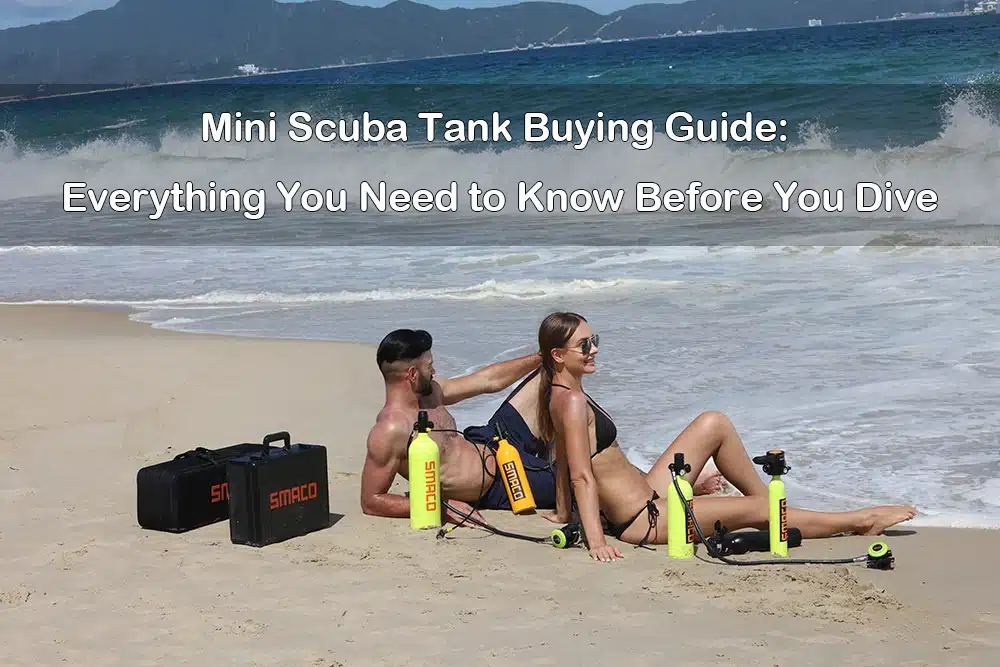Blog
Mini Scuba Tank Buying Guide: Everything You Need to Know Before You Dive
As summer approaches, underwater adventures are on the rise. Many beginner divers and snorkeling enthusiasts are looking for compact alternatives to traditional scuba gear. If you’ve heard about mini scuba tanks but don’t know where to start, you’re in the right place. This comprehensive buying guide will walk you through everything you need to know before your first dive.
What Is a Mini Scuba Tank?
A mini scuba tank is a small, portable breathing device designed to provide several minutes of underwater air. Unlike traditional full-size scuba cylinders, mini tanks are lightweight, easy to carry, and can be used with minimal training or certification. They’re perfect as a primary air source for shallow diving, underwater maintenance, and boating emergencies—and as a reliable backup for certified divers.
Benefits of Mini Scuba Tanks
- Portability: Lightweight and compact, easy to travel with
- Quick Deployment: No heavy setup or assembly required
- Versatility: Suitable for a variety of shallow-water activities
- Affordability: More budget-friendly than a full scuba system
Limitations to Keep in Mind
- Short Dive Time: Typically provides 5–15 minutes of air depending on model and depth
- Shallow Use Only: Best suited for depths of 10 meters (33 feet) or less
- Requires Filling Equipment: Needs a high-pressure hand pump, air compressor, or scuba refill adapter
How Long Can a Mini Tank Last Underwater?
Actual dive time depends on tank size, dive depth, and breathing rate. Approximate durations are:
- 5L Tank: 5~7 minutes
- 7L Tank: 8~12 minutes
- 1L Tank: 12~15 minutes
Estimates are based on surface-level usage. Air consumption increases with depth.
What to Consider When Buying a Mini Scuba Tank
- Tank Size & Capacity
Choose based on your intended use—short dives or as a backup air source - Filling Method
Options include manual hand pumps, electric air compressors, or scuba tank adapters - Material & Build Quality
Look for corrosion-resistant aluminum or carbon fiber construction - Pressure Gauge & Safety Valve
Essential features for monitoring air and preventing overfilling - Certifications & Safety Standards
Ensure the tank meets DOT or CE standards for safe use
Top Mini Scuba Tank Picks for 2025
Looking for a trustworthy option? Here are some top recommendations:
- SMACO S700: 2L capacity, up to 25 minutes dive time, DOT certified
- SMACO S400Pro: Lightweight 1L tank, perfect for beginners and travel
- SMACO S300Plus: Compact 0.5L tank ideal for quick dives and backups
All models come with user-friendly refill options and built-in safety features.
Mini Scuba Tank FAQs
Q: Do I need a scuba license to use a mini tank?
A: For casual shallow diving—especially under supervision—you may not need certification.
Q: Are mini scuba tanks safe to use?
A: Yes, when used properly, filled correctly, and within depth/time limits. Always choose certified products.
Q: Can I bring a mini scuba tank on a plane?
A: Most airlines prohibit pressurized tanks in carry-on baggage. However, empty and depressurized tanks can usually be checked—confirm with your airline.
Conclusion
For underwater exploration beginners or those needing a backup air solution, a mini scuba tank is an excellent entry-level choice. With the right model and preparation, you can unlock a new sense of underwater freedom—without the bulk of traditional gear.
Explore SMACO’s full line of mini scuba tanks and make your next dive lighter, safer, and easier than ever.

